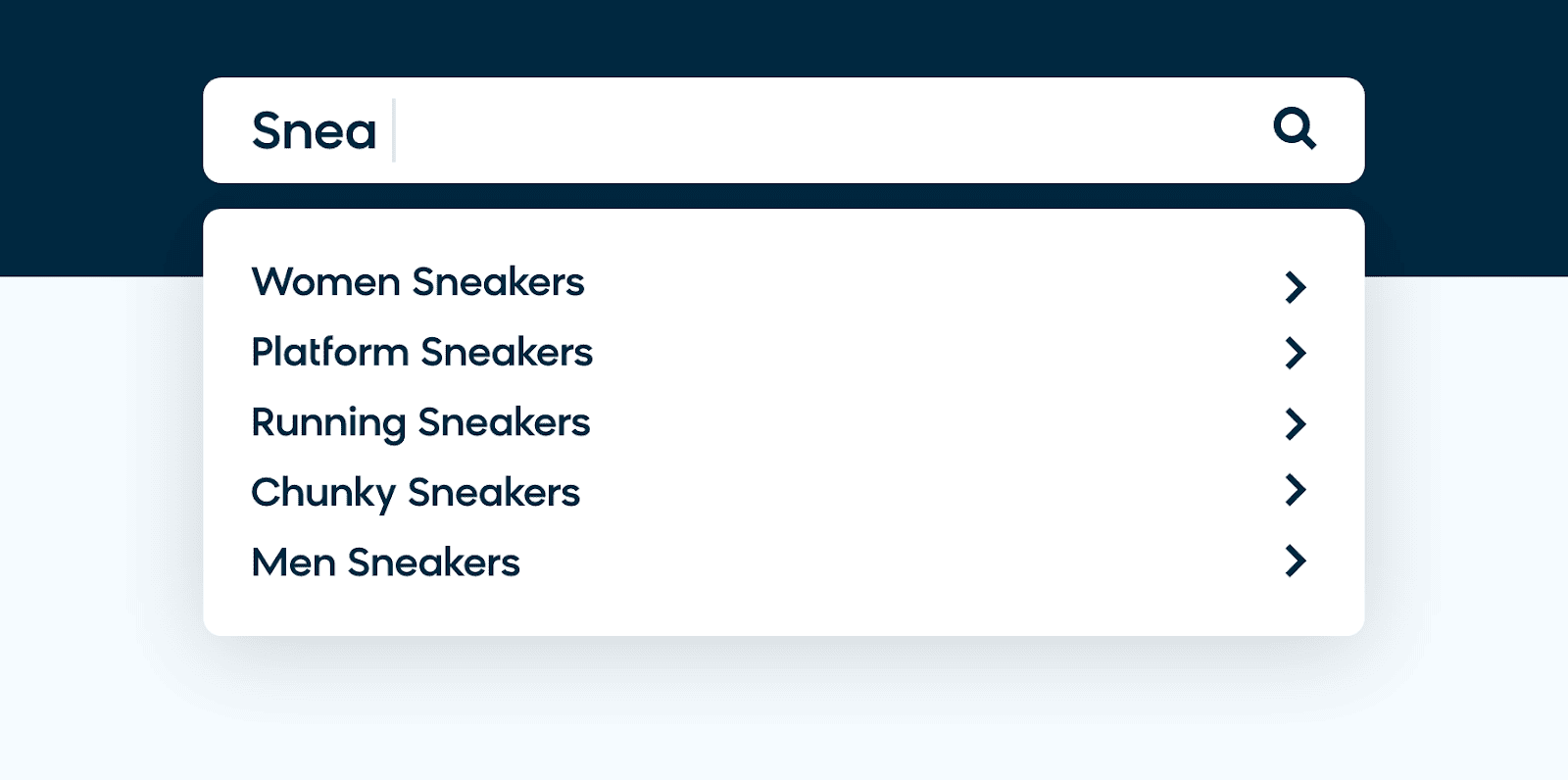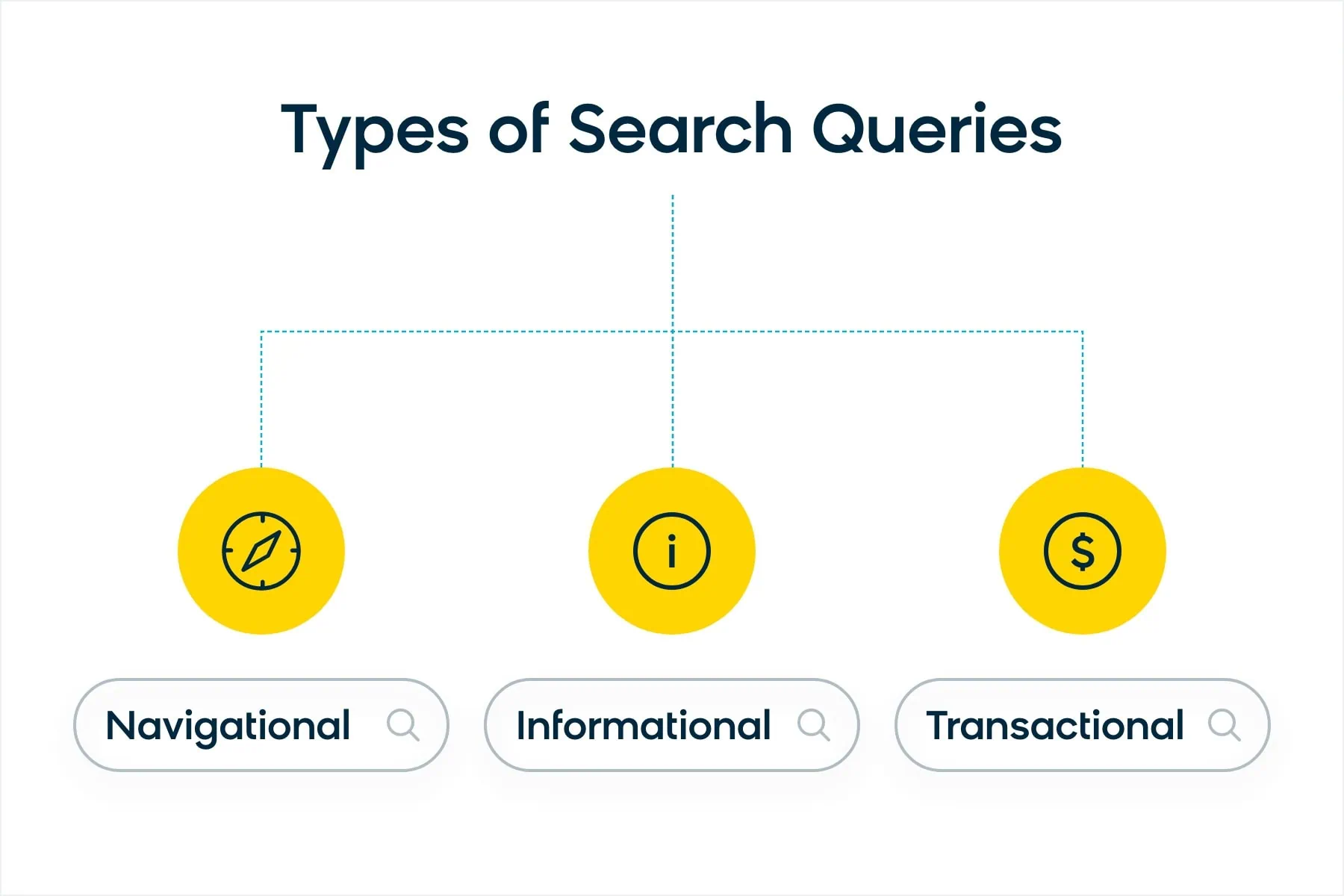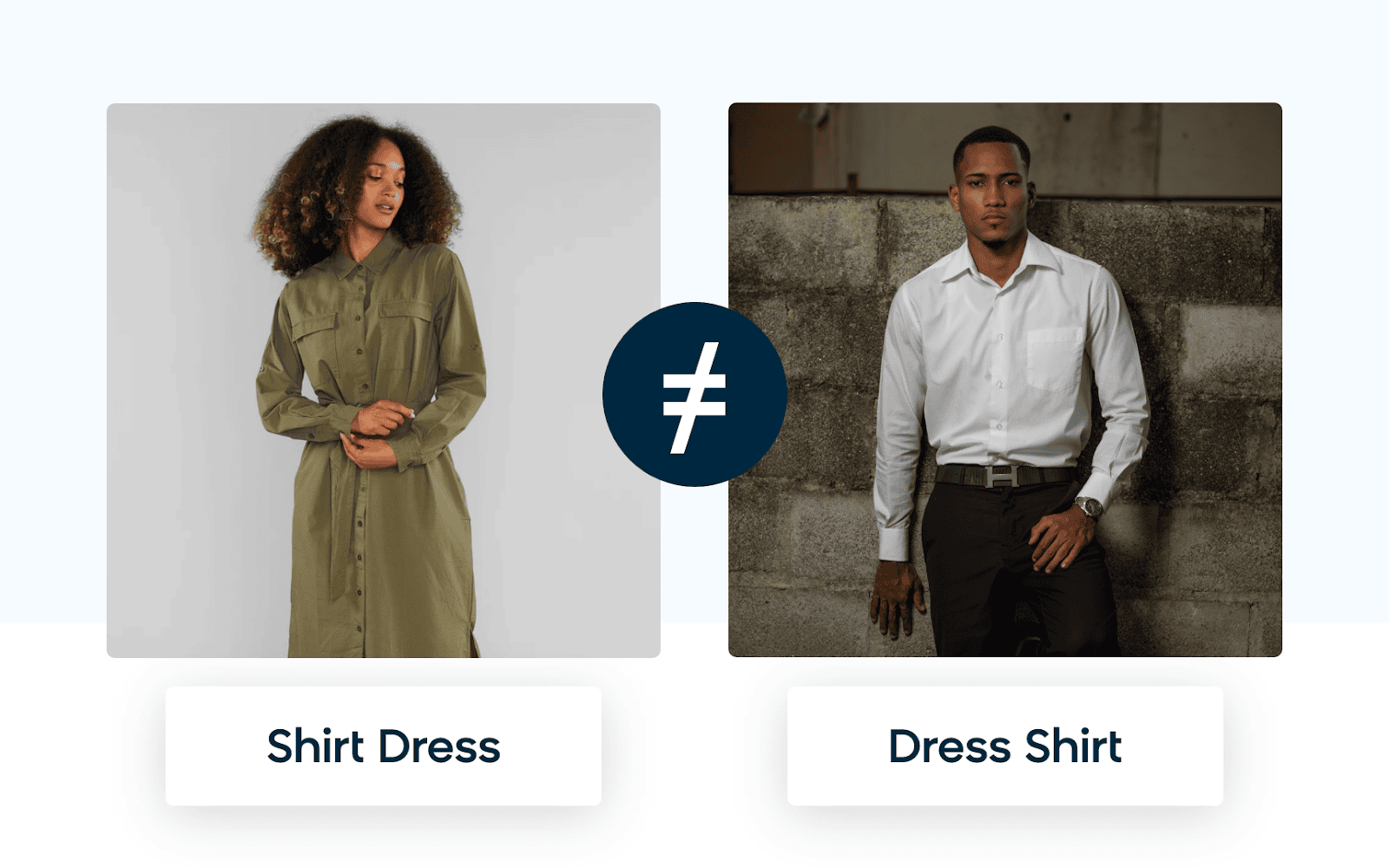Your website should feel like a house party. Before your guests (in this scenario, your site visitors and potential customers) arrive, you’ll want to clean up any clutter and organize your food and drinks (aka your products or services). As a good host, you should be on hand to direct people to where they need to go. Of course, the big question is: How do you get your ecommerce website in order before visitors knock on the front door of your homepage?
Implementing an ecommerce search engine is one popular strategy among brands and helps customers find what they need to convert. In other words, it understands and optimizes complex search queries and translates them into actionable steps within the purchase journey. Site search functionality is extremely important to the shopping journey because it gets searchers to where they want to go — when they need to get there.
To stay ahead of the curve with your ecommerce search engine, it’s crucial to understand how an investment in site search can better your customer acquisition costs (and CAC to LTV ratio) to bridge the gap between your online store and your offline one. Let’s take a closer look at what site search is and what the best ecommerce search solutions include.
What Is Ecommerce Site Search?
Search is so much more than just the search boxes on ecommerce websites. Site search boils down to findability. When we’re thinking of ecommerce specifically, findability is a crucial aspect of both online and offline shopping or buying experiences. You want your customers to find the products and services they’re searching for — and the ones they didn’t even realize that they needed — to increase revenue and return on investment.
This is one of the reasons why we see many businesses pivoting to a customer-centric mindset. They need to align with the customer or buyer’s needs and expectations to win. And yet, many brands leave the power of site search untapped, even when thinking about the complete customer journey. Unfortunately, they don’t realize the full potential of a product search engine that provides relevant results to inspire action.
Why Does Every Type of Search Matter in Ecommerce?
Although it might not surprise anyone, search can mean many different things to many different types of people. In the world of user searches, there are three types of search queries: navigational, informational, and transactional. Navigational searches get the user to where they want to go, while informational search queries retrieve certain types of knowledge for the user. Finally, a transactional search indicates the user’s intent to make a purchase.
In ecommerce, all three types of searches apply to your end goal as a brand — making it a truly unique tool for commerce practitioners. The customer needs to navigate to the correct product or service through your search results and category pages. Next, they must explore their options with the information provided on your ecommerce site, whether it’s through product descriptions, blog posts, or other forms of content. Then, they must hone in on a particular product (or set of products) before making the final transaction.
How Do Ecommerce Site Search Solutions Help Merchandisers?
When it comes to in-store merchandising, physical displays of products are strategically arranged to appeal to the customer and achieve sales goals. Think of those lavish, vivid holiday window displays or the hard-to-deny last-minute purchases that stare at you in the checkout lane. Window displays and checkout lanes are prime locations with a lot of visibility inside a brick-and-mortar storefront, making them the perfect spot for “big bet” products.
Because modern consumers want more than a product catalog hastily uploaded onto your website, your intention should be the same online as it is in store: leveraging product placement to maximize conversions. This can be achieved through multiple tactics. For instance, you could pin specific products to the first spot on a search results page, or you could rank certain items higher near a particular holiday by creating specific search rules. Basically, the best ecommerce search engine you could buy would offer another way to place products in front of the online shopper at the most opportune time.

What Does Your Ecommerce Search Solution Need To Succeed?
Instead of taking the manual route and building an ecommerce site search engine from scratch, invest in an intelligent, automated, and personalized search tool with the perfect balance of AI intelligence and merchandiser control. This way, you don’t have to overload your ecommerce team and can still create a better search experience with relevant results. For those looking to invest in site search solutions, these are a few essential features to consider before making the big leap.
Artificial Intelligence That Continues To Learn Over Time
Contextual knowledge is extremely valuable when you’re having an in-person conversation with someone. Your tone, delivery, and body language convey meaning to the person on the other end of the exchange. On ecommerce sites, certain product search engines often miss out on the nuances of human speech, though.
Machine learning (ML) and natural language processing (NLP) are two subsets of AI that can address this common pain point. NLP helps break down the query, using semantic understanding to separate product types from attributes — that means it can tell the difference between vanilla as a scent, ingredient, or flavor. For example, does your site search understand the difference between a “dress shirt” and a “shirt dress”? The words are the same, but their order changes the meaning completely.
While NLP works to understand every user query, ML algorithms work to analyze seemingly endless amounts of data to determine a set of relevant ecommerce site search results. By crunching data in such a succinct and digestible way, ML can recognize patterns in each shopper’s behavior to continually improve the search experience. Remember, a top-notch ecommerce site search solution can understand your products on a deeper level and present them in ways that make sense to your shoppers. Your site search technology of choice should go beyond keyword matching and be as knowledgeable as your top product or sales professional, and AI can help your company do that — at scale.
Finally, your ecommerce site search solution must also be smart enough to show related products that resonate with your customers. If someone is searching for a La-Z-Boy office chair in black leather, but you don’t have any La-Z-Boys in stock, the last thing you want is to display a “no results” page. Instead, your search should surface relevant options in the same color, style, and material. Two types of AI algorithms will help you do this: recall algorithms and ranking algorithms. A recall algorithm will let businesses return the proper results, while a ranking algorithm will use customer data to arrange products in an order that entices them to act, increasing revenue and brand loyalty.
Automation That Will Save Time and Headaches
While semantic understanding plays an important role in site search functionality, businesses often find that they want to make small, manual fixes to the way results are displayed. That’s fine, as long as the manual search rules don’t spiral out of control. To prevent patchwork fixes from snowballing into major obstacles for your team, you shouldn’t have to optimize for misspellings or alternative spellings. Let natural language processing and machine learning do the work here.
That’s because as your product catalog grows and customer behaviors change, the rules you create will overlap and have contradictions. So, if a person is throwing a holiday party and looking up decorative items related to “Hanukkah,” your search bar should be perceptive enough to not overcorrect the intended search query to off-kilter terms (like “Hannah”) or miss the mark on other spellings of the word (such as “Chanukah”). Synonyms shouldn’t be a roadblock for your customer, either. Disconnects between “sneakers” and “tennis shoes” for footwear merchandisers or “baked goods” and “pastries” for food distributors must be eliminated to avoid more confusion and a higher bounce rate.

The level of findability provided by an automated solution will only help your customer along their purchase journey. They will no longer be left to wander the virtual “aisles” of your ecommerce website, trying to find the product they need. Simply put, it will take your digital merchandising strategy and online product placement to a whole new level.
Personalization That Keeps Your Customers Coming Back
Though it’s vital to think about your search bar in your strategy, it’s just as crucial to consider your customers — who they are, where they want to go, and what they are hoping to find. They often don’t have the time or patience to sift through hundreds or thousands of products, so give them a better experience by surfacing the items that personally speak to them within a matter of seconds.
Although many people think of personalization as the domain of marketers, every touchpoint in the brand experience should make the customer feel understood as an individual. By incorporating implicit personalization, or a combination of those helpful recall and ranking algorithms we discussed earlier, conversions are optimized from the very beginning of the purchase journey — at the search query level.
Many times, attempts to capture attention through personalization often fail due to a data scalability problem. Not only do you have to consider the product with all of its price listings, inventory data, and item descriptions, but you also must examine the individual consumer with their hundreds of different characteristics before processing it all to present personalized results at scale. A merchandiser — or product manager in the case of B2B — doesn’t have time to manually consider all of these elements.
Since consumers want highly personalized digital experiences that align with their search intent, data platforms need a deep understanding of their customer’s tendencies — and a product’s title, image, and category. You can easily pair a site search and digital merchandising solution with a customer data engine to fully leverage both product and customer data (aka commerce data). Combined, these tools can create custom audience segments and optimize your site search based on their specific preferences. For example, US bicycle retailer Jenson USA used this strategic approach and drove an 8.5% boost in revenue per visitor.
While search best practices will always be important to your strategy, site search tools are just as vital. With consumers as demanding as they are today, an automated solution with AI and personalization capabilities is needed to solve the modern-day challenges of ecommerce site search.
Bloomreach Gives Your Search Bar Everything It Needs
If you’re looking for AI, automation, and personalization in one solution, look no further than Bloomreach Discovery.
With a next-gen AI core, our product discovery solution always returns the most relevant, revenue-driving results. It brings all your customer and product data together, connecting every data point and ensuring that your search results automatically serve the right answers to any query — your search bar is optimized for your shoppers, not just your products, with the ability to provide personalized results and create the seamless ecommerce experience your customers expect.
Plus, with NLP and ML, you don’t need to constantly monitor and fine-tune your search experience manually. Bloomreach Discovery can take on these tedious tasks, automatically refining your search results as your product catalog and customer preferences change. You get a complete understanding of the way your customers shop and search, with AI leveraging these insights to personalize the search experience, increase conversions, and grow your business.
It’s time to bring impactful ecommerce search to your business. Explore the different ways you can automatically personalize your search experience using Bloomreach Discovery.


















